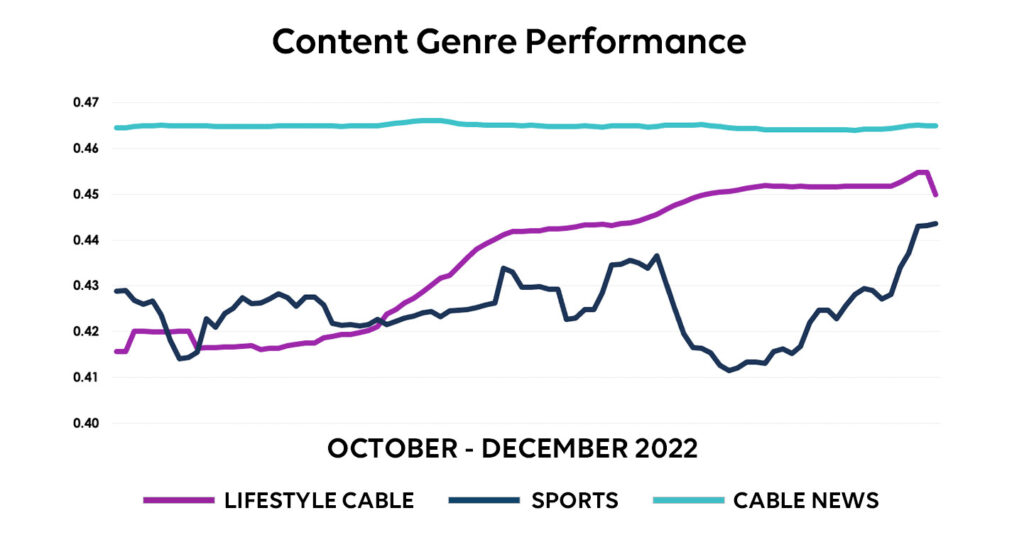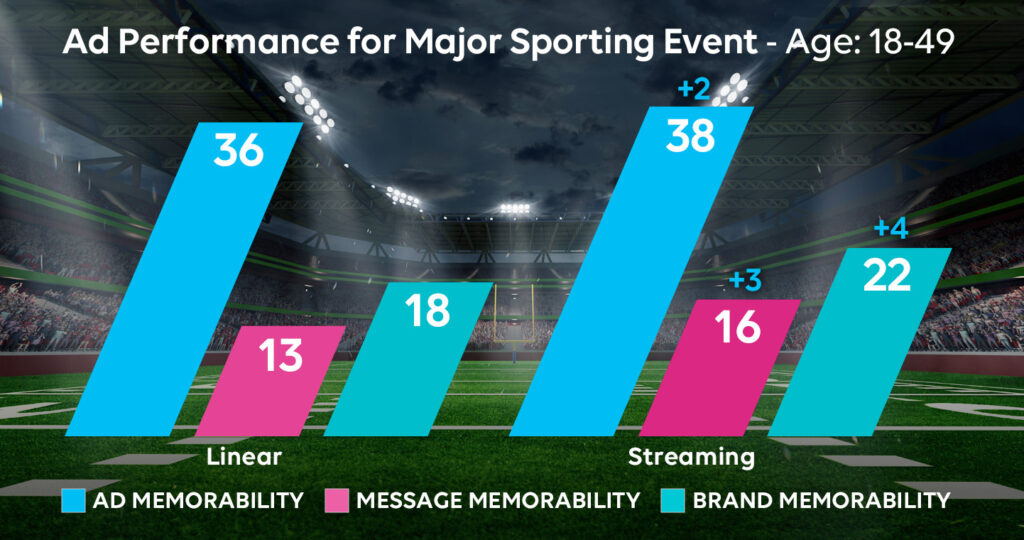At the 2024 Media Insights & Engagement Conference, MarketCast’s SVP of Media, Sports, and Entertainment, Ben Carlson, presented a thought-provoking session on the impact of media content on advertising performance. By walking the audience through some deep-dive examples from the company’s Brand Effect solution, Ben discussed how great content matters not only from the scope of driving viewership but also how the content impacts the performance of advertisements themselves.
Reach is Critical, But it’s Not Everything
As we continue to see more ad supported streaming platforms emerging, it’s important to note that advertising reach is still paramount; the more eyeballs you can put your ad in front of, the better. But now, we need to bring resonance into the equation – meaning, how impactful is your advertising and how did the content influence ad recall and brand memorability to drive upper funnel performance?
Using MarketCast Brand Effect, the industry standard for measuring upper funnel ad performance across platforms (including linear, CTV, social & digital), we’ve created norms and benchmarks to deliver side-by-side data comparisons of how ads perform in different content landscapes. And while the quality of the ad creative itself is still the top driver of performance, the combination of timing, placement, and media content together can represent as much as 35 percent of brand memorability in advertising, proving that where, when, and with what content your ad appears has real influence.
After spending years digging deep into this data, we have developed the 3 Simple Rules of Resonance:
Rule 1: Content Matters to Ad Performance
It may sound obvious, but it’s always worth reiterating that content where the ad is placed relates to how well it resonates with audiences. If a program is highly engaging to audiences, the ads typically perform higher within it.
A weirdly interesting example we discovered is the reality documentary series Cops; it’s been on the air for 35 years, viewers can tune in on multiple CTV platforms, and it delivers massive reach. However, while the show is very successful at delivering eyeballs, ads performing within Cops across all distribution channels landed more than 20 percent below our CTV norm for Brand Memorability. In this case, Reach didn’t equal Resonance.
Rule 2: High Performing Content Does Not Always Mean Scripted
When thinking about what “great content” means, your mind might go to the shows that win the most Emmys, have big stars, or dedicated fan followings. While that is true, it can also include all different forms of content. The below graph illustrates the ad resonance among different networks over a one-year timeframe, where we see variations and changes based on specific factors within those channels. Surprisingly, cable news remained consistent across the entire period regarding how the ads performed in that programming. This might be explained by the demographics of cable news audiences and the consistent way cable news programming is presented daily.

We found that Fox News and MSNBC, in particular, have the strongest resonance, with CNN and other evening broadcast news programs right behind them, demonstrating very high ad resonance across the entire news landscape.
Rule 3: The Platform (and the Ad Experience) Matters
One of the biggest trends we are seeing is the transition of live sports to streaming services, from Netflix airing live golf, tennis, and soon WWE’s Monday Night Raw to Amazon’s Thursday Night Football & Black Friday games, and we can’t forget Peacock hosting the NFL’s first streaming-only playoff game. So, we set out to understand the different ad performances and impact within similar sporting events on linear TV vs streaming.
From a head-to-head comparison of two games during the same weekend, we found that the ads inside the streaming platform performed almost as well as those within the linear TV programming across a general 18+ audience (in looking at ad, message, and brand memorability.) In drilling into the audience demographics, specifically 25-54 -54-year-olds, ad memorability actually went up +3, brand memorability increased +4, and message memorability went up +4 for the streaming platform vs. linear. Emphasizing the platform and ad experience do have an impact.

While interesting, these findings raise additional questions for marketers and researchers alike. Why was the performance better from one game to another? What impact did the game itself have on Ad Resonance? And how did the platform factor in?
At MarketCast, we are focused on finding new ways to analyze data and helping our clients (both on the selling and buying side) holistically measure advertising performance. Using Brand Effect, we’ve been able to isolate and measure the power of content and the platform it appears on to get a greater measure of ad resonance, which, combined with reach metrics, gives a better understanding of how your ads are performing.
To obtain a copy of the session presentation or to learn how MarketCast can help you optimize your advertising to drive resonance, contact us.


